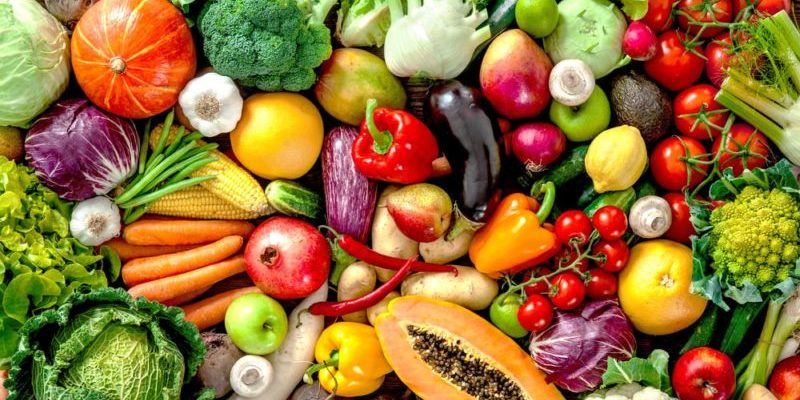The vegetables They are edible herbaceous plants that are usually grown in gardens and can be consumed both raw and cooked. Legumes and vegetables are within this group, but fruits of woody plants and extensively grown cereals are not included. For instance: chard, pumpkin, celery and parsley.
They are foods that are used to prepare dishes such as salads, cakes, soups and juices and that are characterized by having a large amount of water (some have 80% water in their composition). In addition, they are vegetables low in lipids and proteins, but very rich in fibers, vitamins (especially vitamins A, E, K, B and C) and minerals, among which are: iron, potassium, magnesium, sodium and calcium.
Vegetables allow a type of slow absorption of carbohydrates (carbohydrates) in the body, that is, the body takes longer to absorb nutrients than other foods. Although not all vegetables have the same amount of calories, they all tend to have a low caloric and energy value, which is why they are often used in low calorie diets.
Due to the nutritional benefits of vegetables, their regular consumption is usually recommended. It is important to respect, in each case, the washing and storage instructions (for better conservation) and to know the preparation and cooking options to get the best out of the vitamins and minerals present in these vegetables.

Types of vegetables
A vegetable can be classified according to several criteria:
According to the amount of carbohydrates in its composition:
- Group A. They are those that have an absorption of less than 5% of carbohydrates, so their consumption is used in low-calorie diets. For instance: chard, spinach, lettuce, celery, eggplant, cauliflower and radish.
- B Group. They are those that have between 5 and 10% carbohydrates. For instance: onion, turnip, peas, artichoke, carrot and beet.
- Group C. They are the vegetables that have the most carbohydrates in their composition (more than 10%). For instance: the potato (potato) and cassava.
According to the botanical family to which they belong:
- Amaryllidaceae. For instance: garlic, leek and onion.
- Solanaceae. For instance: tomato, bell pepper, potato and eggplant.
- Fabaceae or legumes. For instance: peas, beans and broad beans.
- Brassica or cruciferous. For instance: watercress, broccoli, cauliflower and arugula.
- Umbelliferous or apiaceous. For instance: celery, carrot, parsley and fennel.
- Grasses or Poaceae. For instance: millet and corn.
- Chenopodiaceae. For instance: chard, spinach and beets.
- Cucurbits. For instance: the pumpkin, the melon, the watermelon and the cucumber.
- Composite or asteraceae. For instance: the endive, the sunflower and the lettuce.
Edible parts of vegetables
Vegetables can be differentiated from each other according to the part of the vegetable that is ingested:
- The roots. For instance: carrots and beets.
- Leaves. For instance: lettuce and chard.
- Stems. For instance: celery and fennel.
- Bulbs. For instance: onion and garlic.
- The flower. For instance: broccoli and cauliflower.
- The fruit. For instance: the tomato, the pepper, the cucumber and the pumpkin.
- The seeds. For instance: flax and peas.
Examples of vegetables
- Chard (Quenopodiaceae)
- Garlic (Amaryllidaceae)
- Basil (Lamiaceae)
- Artichoke (Asteraceae)
- Celery (Apiaceae)
- Celeriac (Apiaceae)
- Eggplant (Solanaceae)
- Sweet Potato (Convolvulaceae)
- Borage (Borageenans)
- Broccoli (Brassicaceae)
- Zucchini (Cucurbits)
- Pumpkin (Cucurbits)
- Thistle (Asteraceae)
- Onion (Amaryllidaceae)
- Chives (Amaryllidaceae)
- Parsnip (Apiaceae)
- White cabbage (Brasicáceas)
- Chinese cabbage (Brasicáceas)
- Brussels sprouts (Brasicáceas)
- Cabbage of Milan (Brasicáceas)
- Red cabbage (Brasicáceas)
- Cauliflower (Brassicaceae)
- Kohlrabi (Brassicaceae)
- Endive (Asteraceae)
- Escalonia (Amaryllidaceae)
- Asparagus (Asparagaceae)
- Spinach (Quenopodiaceae)
- Pea (Fabaceae)
- Broad bean (Fabaceae)
- Lamb’s lettuce (Valerianáceas)
- Green bean (Fabaceae)
- Lettuce (Asteraceae)
- Cassava (Euphorbiaceae)
- Corn (Poaceae)
- Melon (Cucurbits)
- Turnip (Brassicaceae)
- Potato or potato (Solanaceae)
- Cucumber (Cucurbits)
- Parsley (Apiaceae)
- Pepper (Solanaceae)
- Leek (Amaryllidaceae)
- Radish (Brassicaceae)
- Radicheta (Asteraceae)
- Beetroot (Chenopodiaceae)
- Romanesco (Brasicáceas)
- Watermelon (Cucurbits)
- Tomato (Solanaceae)
- Carrot (Apiaceae)
- Zucchini (Cucurbits)
- Pumpkin (Cucurbits)
